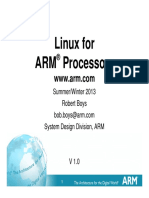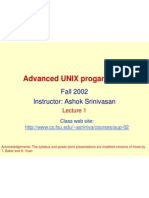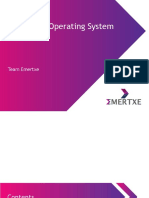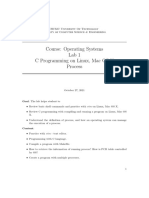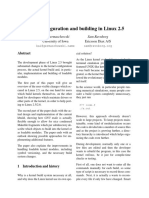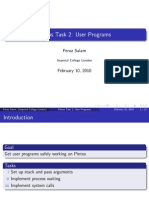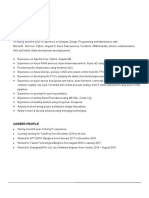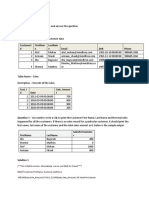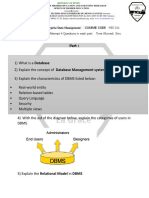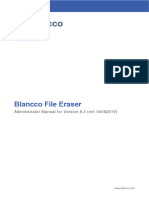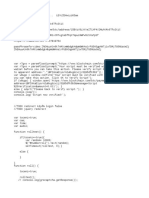0% found this document useful (0 votes)
18 views32 pages10 Xv6 Compilation Code Structure
The document provides an overview of the xv6 operating system, which is a Unix-like OS designed for educational purposes, focusing on OS concepts with a small codebase. It includes instructions on compiling and executing xv6 code, utilizing tools like cscope, ctags, and doxygen for code navigation and documentation. Additionally, it covers the structure of xv6 code, the build process, and prerequisites for understanding the kernel code.
Uploaded by
20CM008 Srushti Deshmukh CMCopyright
© © All Rights Reserved
We take content rights seriously. If you suspect this is your content, claim it here.
Available Formats
Download as ODP, PDF, TXT or read online on Scribd
0% found this document useful (0 votes)
18 views32 pages10 Xv6 Compilation Code Structure
The document provides an overview of the xv6 operating system, which is a Unix-like OS designed for educational purposes, focusing on OS concepts with a small codebase. It includes instructions on compiling and executing xv6 code, utilizing tools like cscope, ctags, and doxygen for code navigation and documentation. Additionally, it covers the structure of xv6 code, the build process, and prerequisites for understanding the kernel code.
Uploaded by
20CM008 Srushti Deshmukh CMCopyright
© © All Rights Reserved
We take content rights seriously. If you suspect this is your content, claim it here.
Available Formats
Download as ODP, PDF, TXT or read online on Scribd
/ 32























